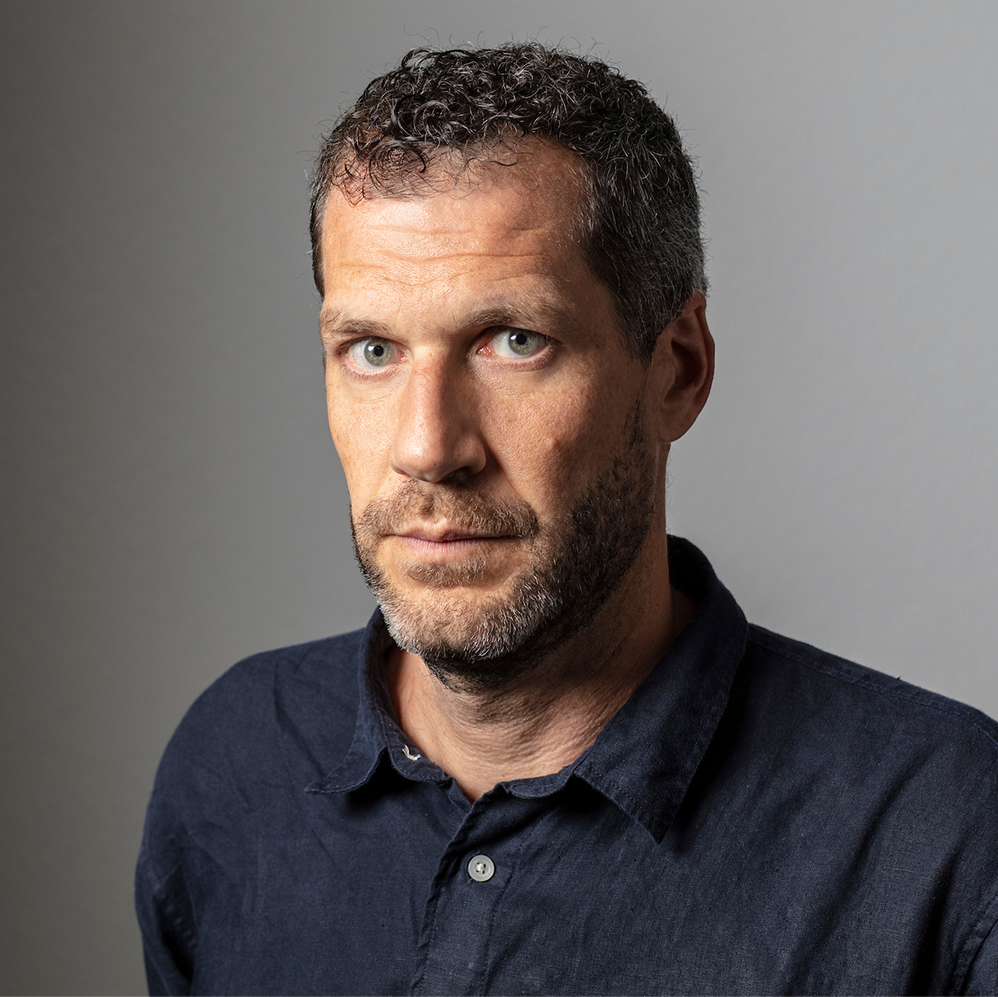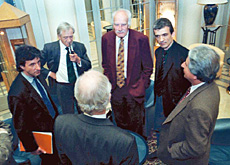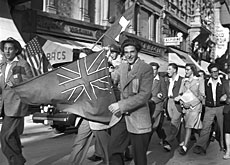Swiss set to digitalise Nuremberg Trials

Historic audio recordings from the Nuremberg Trials of notorious Nazi war criminals look set to be made available to the public thanks to a unique Swiss system.
The International Court of Justice in The Hague has requested help from the College of Engineering and Architecture in Fribourg to digitalize hundreds of hours of crackly audio from the trials stored on 2,000 dusty old vinyl records.
“The records were more or less forgotten at The Hague until someone found them in a storage room some five years ago,” Ottar Johnsen, professor of signal processing at Fribourg’s College of Engineering and Architecture, told swissinfo.ch.
Twenty-two high-ranking Nazis were put on trial in Nuremberg, Germany, from October 1945 to October 1946, and found guilty of charges such as waging a war of aggression, war crimes and crimes against humanity.
Hermann Göring, Rudolf Hess and Joachim von Ribbentrop were among those in the dock. Martin Bormann, Hitler’s deputy, was tried in absentia.
The Nuremberg trials are seen as setting an important legal precedent, preparing the ground for subsequent international war crimes prosecutions and the International Criminal Court.
Although transcripts and short films of the trials already exist, it will be the first time digital recordings of the entire trial sessions will be available to the public via the internet.
Johnsen is sure the digital files will offer new insights into the famous tribunal.
“The main thing will be the emotion,” he noted. “Crying or anger does not come across in the written texts.”
The court first contacted the Fribourg school some three years ago but after recent developments, Johnsen is hopeful an official contract should be signed by the end of this year.
“I think it will be positive, but funding is complicated so it may be tomorrow or it might take a few months more,” he added.
Revolutionary system
To help rescue the records, the school will use its revolutionary “Visual Audio” system, the only one of its kind in the world, which has been developed together with the Swiss National Sound Archive in Lugano, in Italian-speaking Switzerland.
Launched in 1999, Visual Audio conserves old analogue audio recordings in digital file formats. It does this by first taking extremely high-resolution photographs of the records from above to capture the shape and details of the grooves.
“We use silver-based film photography because we need a resolution of 2,500 megapixels – it’s 100 times greater than the best digital cameras today,” Johnsen explained.
A rotating machine equipped with a linear digital camera and light source, which analyses the shapes and forms, then scans the photos. Very precise digital sound waves are then re-created on a computer.
Reassembling the puzzle
Students from the Fribourg school have already successfully tested several extracts from the chief American prosecutor at Nuremberg, Robert Jackson.
Once the project is officially signed, Johnsen believes it will take two people approximately six months to go through the piles of records, depending on their quality.
Each 30cm record has 25 minutes of audio recorded on each side using 78 disk technologies. The records are thought to have been kept in a storage room and the majority has not been opened.
“It’s like archaeology,” said Johnsen. “There is least damage when they are covered.”
Old 78s last anywhere from between ten and 200 years. Even if the Nuremberg trial records are in a bad shape or broken into large pieces, the computer is able to reassemble the sound, he added.
Trials
Visual Audio is currently employed by the Swiss National Sound Archive to produce high-resolution files for archiving as well as compressed MP3 files for the general public, explained Stefano Cavaglieri, the archive’s technical director.
The system is also being used at the Radio Suisse Romande station to archive radio recordings from tens of thousands of old 78s, many of which are seriously damaged.
It has also been trialled by the French National Library, an Austrian public library and private audiophiles.
“An eighty-year old Scottish man contacted us to digitalize one of his old records from 1942,” said Johnsen. “He wept when he heard the music he used to listen to when he was 20 years old.”
Simon Bradley, swissinfo.ch
The Nuremberg Trials were a series of military tribunals, set up by the victorious allies after World War Two, and the defendants were tried by a panel of judges from the US, Britain and the Soviet Union.
The first and best known was the Trial of the Major War Criminals before the International Military Tribunal, which tried 22 of the most important captured leaders of Nazi Germany.
It was held from November 20, 1945 to October 1, 1946. The second set of trials of lesser war criminals was conducted at the US Nuremberg Military Tribunals.
Hermann Göring, Rudolf Hess and Joachim von Ribbentrop were among those placed on trial. Martin Bormann, Hitler’s deputy, was tried in absentia.
The defendants were charged with the then-new offences that have since become fixed in international law, including waging a war of aggression, war crimes and crimes against humanity.
Twelve defendants were sentenced to death, seven received long prison terms and three were acquitted.

In compliance with the JTI standards
More: SWI swissinfo.ch certified by the Journalism Trust Initiative













You can find an overview of ongoing debates with our journalists here . Please join us!
If you want to start a conversation about a topic raised in this article or want to report factual errors, email us at english@swissinfo.ch.